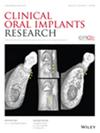Force Feedback Implant Robot With Osseodensification Drilling for Transcrestal Sinus Floor Elevation: A Retrospective Case Series Study
Abstract
Objectives
This study evaluated the effectiveness of force-feedback–based autonomous dental implant robotic systems combined with osseodensification (OD) for transcrestal sinus floor elevation (TSFE), to understand patterns of force-feedback curves, visualize the TSFE process through mechanical vision, and offer new perspectives on surgical strategies.
Materials and Methods
The included patients required simultaneous implant placement and TSFE. Preoperative planning was performed, and during surgery, using an OD drill, the robotic arm was guided to create a microfracture on the sinus floor, elevate the sinus membrane, and place the implant, all under the surgeon's supervision. Postoperative cone-beam computed tomography evaluated sinus lift and implant accuracy. The visual analog scale was used to measure patient-reported outcomes. Mechanical curves were plotted using extracted force-feedback values. Data are reported as mean ± standard deviation and Pearson's correlation for linear relationships (p < 0.05 was statistically significant).
Results
Overall, 17 patients (18 implants) were included, with a 94.4% implant retention rate at 6 months postoperatively. The Fz force-feedback curve showed a critical peak followed by a sharp drop at the sinus-floor breakthrough point and a gradual rise followed by a steep decrease as the bone graft entered the sinus cavity. Cortical bone density at the sinus floor positively correlated with force feedback (p < 0.05).
Conclusions
Force-feedback–based implant robotics combined with OD is an innovative and reliable approach for TSFE. Integrating mechanical vision with force-feedback curves allows for precise identification of microfracture points and safe sinus membrane elevation, overcoming the limitations of traditional blind techniques and enhancing procedural safety and predictability.
Trial Registration
Chinese Clinical Trial Registry: ChiCTR2300072248

 求助内容:
求助内容: 应助结果提醒方式:
应助结果提醒方式:


